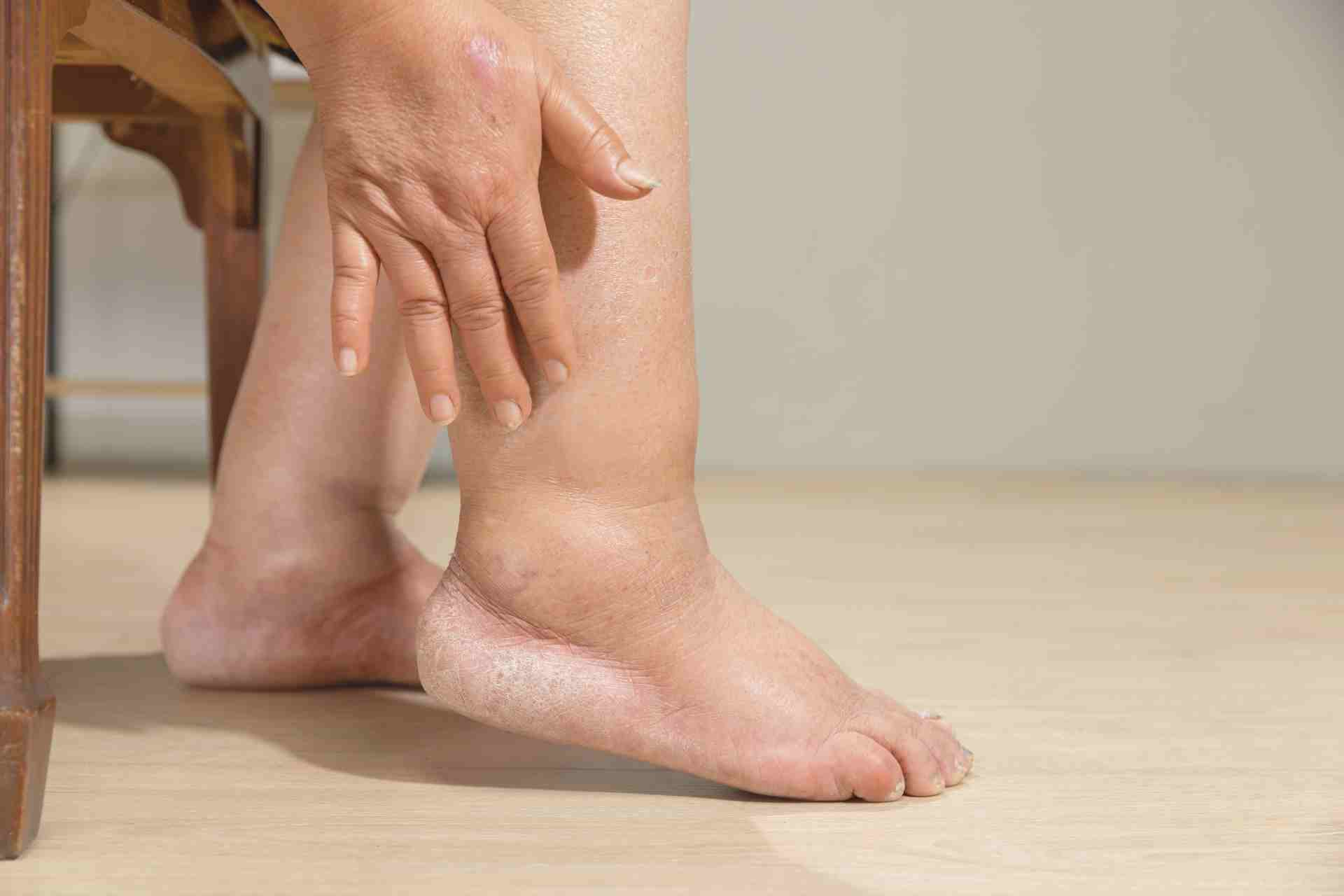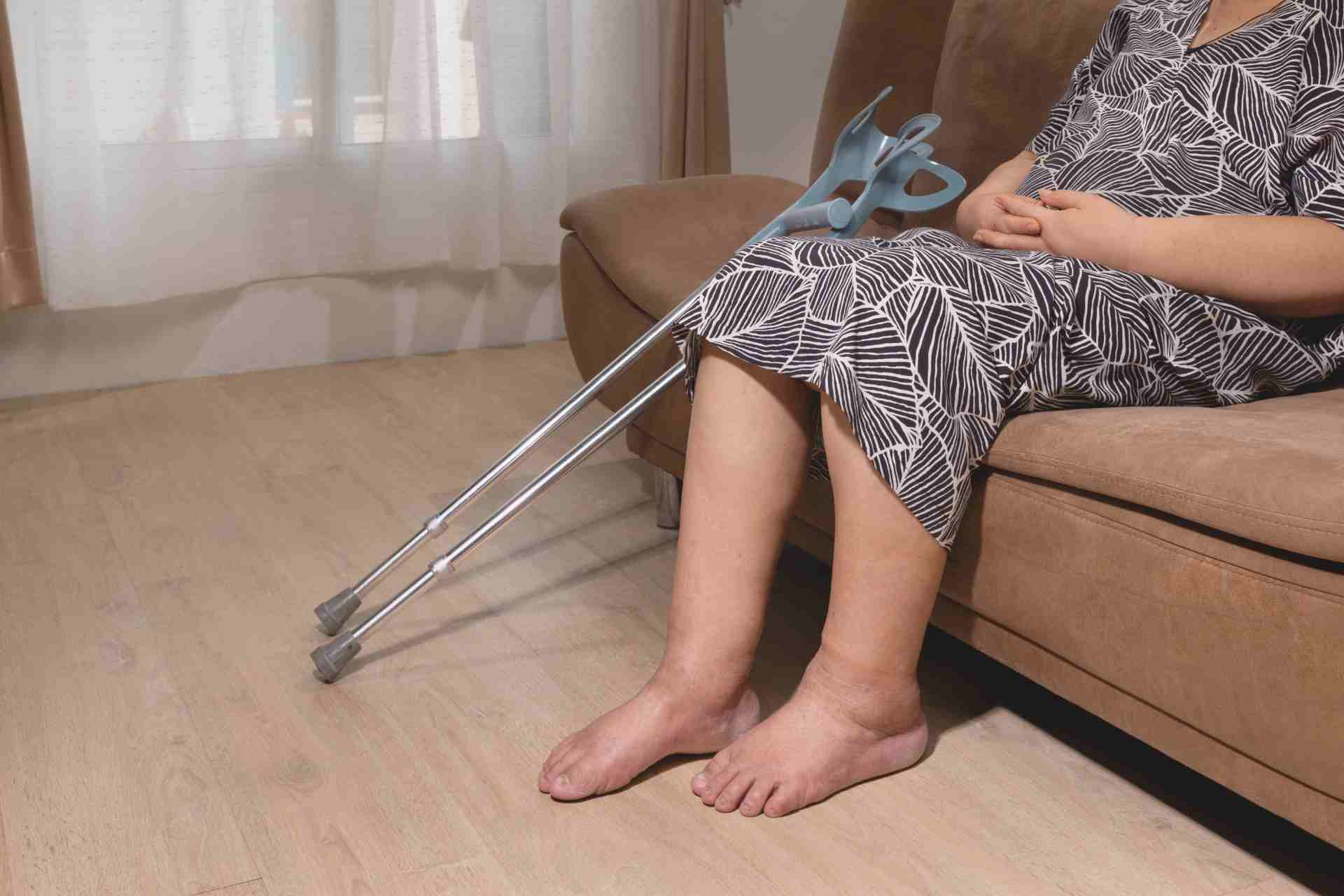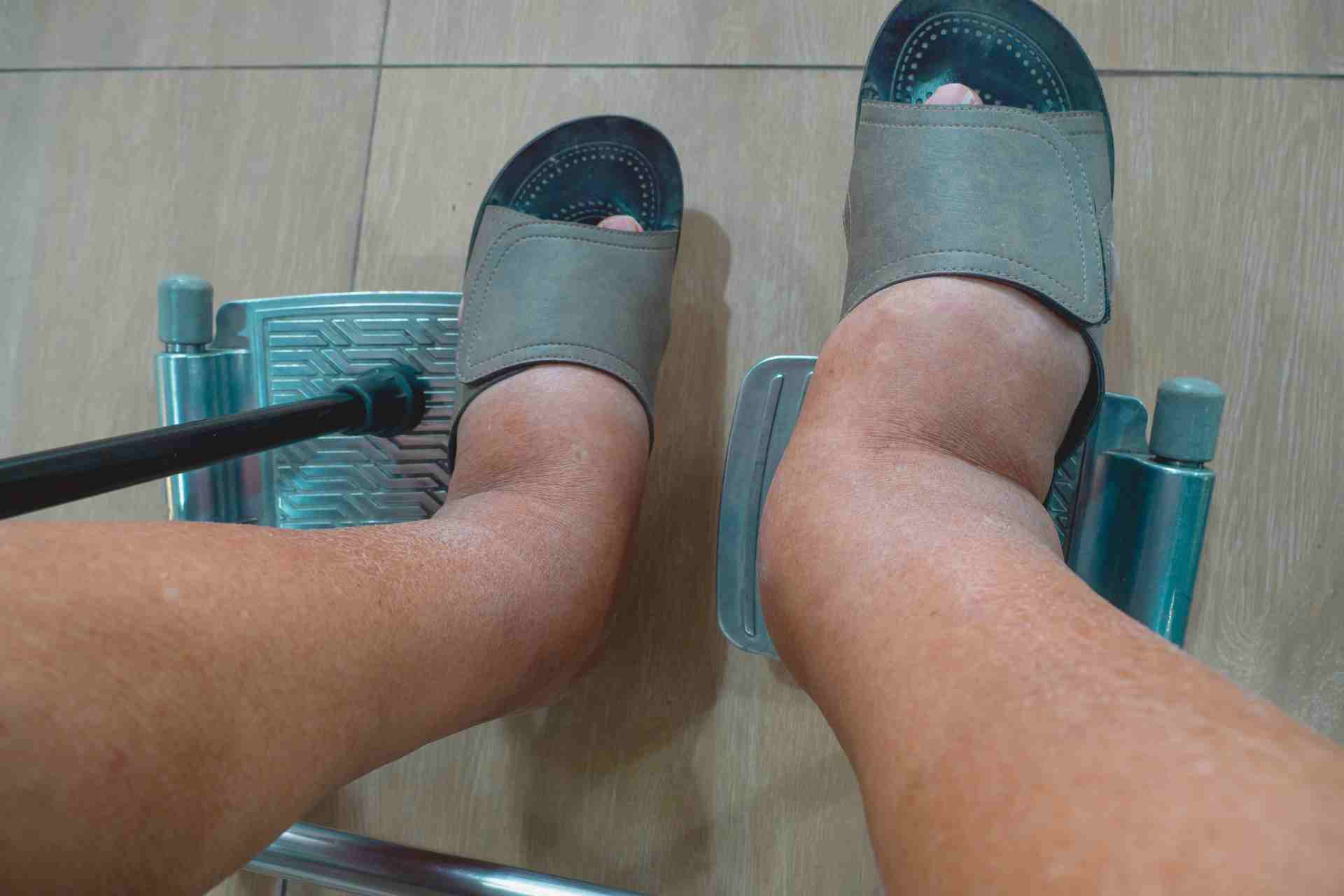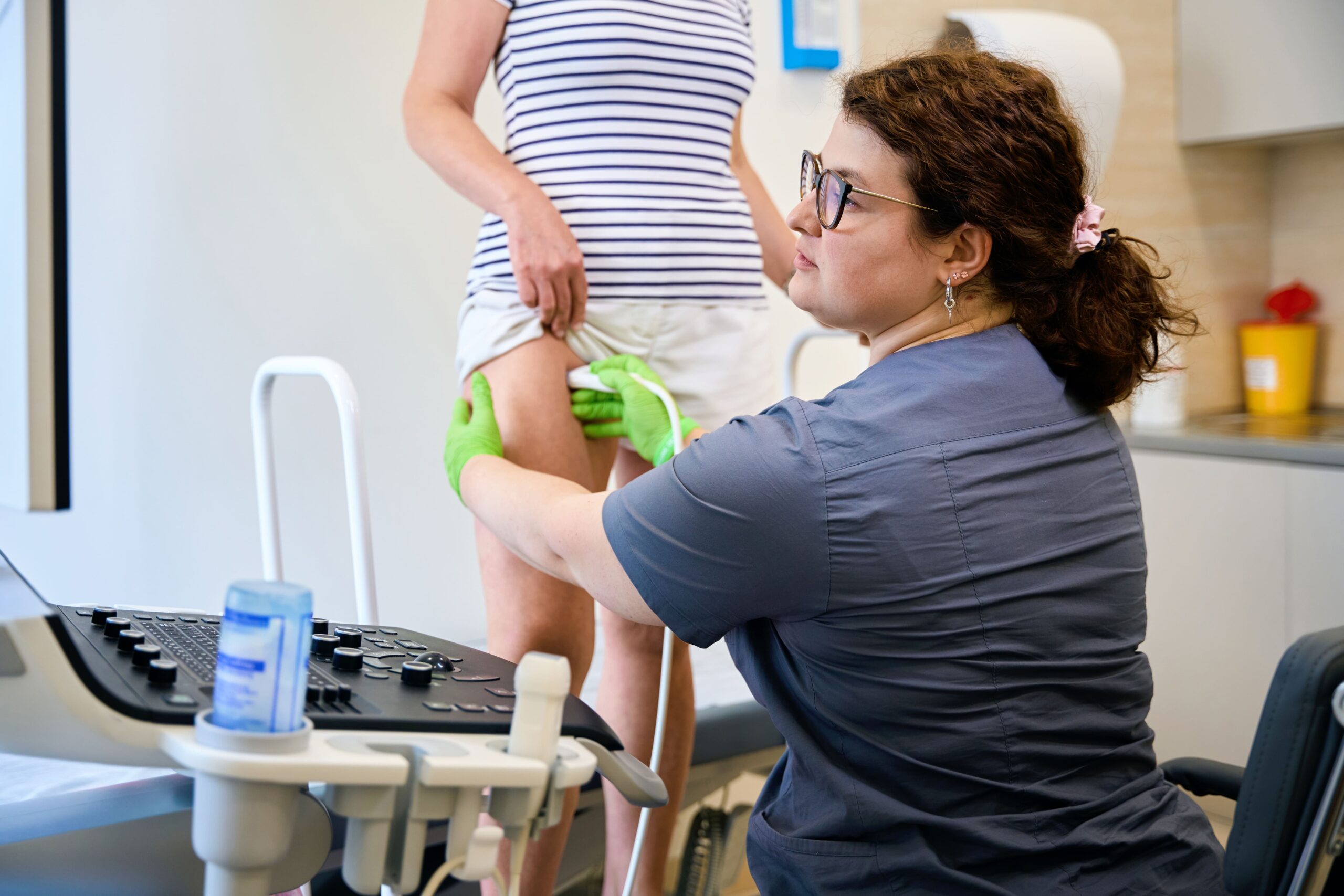By: Dr. Dev Batra | 07.12.25
Highlights
- Heat edema is swelling in the legs or feet caused by hot weather and poor fluid circulation.
- It’s usually harmless, but persistent or painful swelling may signal a vascular condition.
- Older adults, people with vein issues, and those in hot climates like Texas are more at risk.
- At-home relief includes leg elevation, hydration, and compression socks.
- See a vascular specialist if symptoms last, worsen, or feel unusual, especially in one leg.
It’s a familiar feeling for many Texans: the temperatures climb, the sun beats down, and by the end of the day, your legs, ankles, and feet feel swollen and puffy. You might shrug it off as “just the heat” – but what you’re experiencing could be heat edema.
While swelling from heat isn’t always serious, it’s something you shouldn’t ignore (especially if it happens often or worsens over time).
Let’s break down what heat edema really is, who’s most at risk, when you should talk to a doctor, and how to protect your vein health this summer.
What Is Heat Edema?
Heat edema refers to swelling that occurs when hot temperatures cause your blood vessels to expand (dilate). This dilation allows more blood to flow to the skin to help cool your body, but it can also lead to fluid leaking into surrounding tissues – especially in your legs, ankles, and feet.
The extra fluid is what makes your legs or feet feel puffy on hot days. This happens because, in high temperatures, your body has a harder time pushing blood back up from your legs to the heart. When this happens, fluid can build up and cause swelling.
For many people, heat edema goes away when you cool down, elevate your legs, or reduce your salt intake. But in some cases, it may be a sign of an underlying issue like chronic venous insufficiency or early-stage vein disease.

What Causes Heat Edema?
Heat edema occurs when heat exposure leads to swelling caused by fluid retention in the body. It’s a common response to hot weather, particularly during prolonged periods of standing or sitting. While it’s not usually a serious condition, understanding why it happens can provide relief and reassurance.
The Body’s Natural Response to Heat
When exposed to heat, the body adjusts to help regulate its internal temperature. Blood vessels dilate (widen), allowing blood to flow more easily to the skin where heat can dissipate. While this process helps cool the body, it can also cause fluid to leak into the surrounding tissues, leading to noticeable swelling.
Why the Legs and Feet Swell
Swelling from heat edema is especially common in the legs and feet. This happens because:
- Gravity pulls fluids downward, making the lower extremities more prone to pooling.\
- Prolonged standing or sitting can worsen this effect, as movement helps circulate blood more effectively.
- Veins may struggle to return blood efficiently back to the heart, especially if circulation is already compromised.
Who’s Most At Risk for Heat Edema?
Anyone can experience heat-related swelling, but certain people are more prone to it.
- You may be at higher risk if you:
- Are over 50
- Have poor circulation or chronic venous insufficiency
- Have varicose veins or spider veins
- Are pregnant
- Have heart, kidney, or thyroid conditions
- Are overweight or obese
- Take certain medications (like calcium channel blockers or steroids)
- Spend long hours standing or sitting in heat

Living in a hot, humid climate like Texas adds extra strain on your circulation. Your veins have to work even harder to pump blood back to your heart, increasing the risk of leg swelling in hot weather.
Signs and Symptoms to Watch For
It’s important to pay attention to any swelling in your ankles, feet, or lower legs, as it could be an indication of underlying vascular issues. Common signs include:
- Swelling in ankles, feet, or lower legs
- Tightness or puffiness in the skin
- Skin may feel warm but is usually not painful
- Swelling may be symmetrical (both legs)
While these symptoms can often be mild or harmless, noticing patterns or worsening conditions is key. Sometimes, swelling might just be from standing too long or hot weather, but it’s always good to listen to your body.
When It Might Signal Something More Serious
Swelling isn’t always harmless. In fact, some symptoms may point to more serious health concerns. Keep an eye out for the following:
- Swelling that is painful or only in one leg
- Skin discoloration or changes in texture
- Shortness of breath or chest pain
- History of blood clots or vascular disease
If you notice these signs, it’s critical to seek medical attention quickly. Some of these could signal conditions like deep vein thrombosis (DVT) or heart issues, which require timely care. Remember, your health is worth prioritizing. Always err on the side of caution if you’re unsure about symptoms.

Is Heat Edema Dangerous?
In many cases, heat edema is mild and temporary. But if it becomes frequent or painful, it may signal a deeper problem that needs medical attention.
Chronic swelling can lead to skin changes or infections, increase your risk of blood clots, or indicate underlying vein disease or heart issues.
If you’re regularly dealing with swollen legs in summer, don’t ignore it. Repeated episodes of fluid retention may reflect circulation problems that can worsen over time.
How To Relieve and Prevent Heat Edema
While you can’t control the Texas heat, there are simple ways to help keep swelling under control. Staying hydrated is one of the most important steps, since dehydration can actually make fluid retention worse. Cutting back on salty foods can also help reduce swelling.
It’s important to avoid sitting or standing in one position for too long, and when you do rest, try to elevate your legs to help improve circulation. Some people also benefit from wearing compression stockings, which gently support healthy blood flow.
Staying cool with fans, air conditioning, or cool showers can also make a big difference during especially hot days. And as always, maintaining a healthy weight and staying active can go a long way toward supporting overall vascular health.
When Should you See a Vascular Specialist?
Occasional puffiness after a hot day may not be cause for concern. But you should schedule an evaluation if you notice:
- Persistent swelling that doesn’t improve
- Swelling accompanied by pain, redness, or warmth
- One leg more swollen than the other
- Skin discoloration or sores
- A heavy, aching sensation in your legs
At Texas Vascular Institute, our team specializes in diagnosing and treating circulation disorders – including heat edema, vein disease, and chronic venous insufficiency.
Learn more about our services for leg pain and swelling here.

Related Vascular Conditions To Be Aware Of
Below are some of the most common vascular conditions to be mindful of, as well as an important tip to help you take the next step toward proper care.
Chronic Venous Insufficiency (CVI)
CVI happens when the veins in your legs struggle to send blood back to your heart, causing symptoms like swelling, heaviness, or skin changes.
Deep Vein Thrombosis (DVT)
This condition involves the formation of blood clots in deep veins, often in the legs. DVT can be serious if the clot travels to the lungs, so prompt attention is essential.
Lymphedema
A buildup of lymph fluid often occurs after surgery or damage to lymph nodes, leading to persistent swelling, particularly in the arms or legs.
Peripheral Artery Disease (PAD)
PAD restricts blood flow to your limbs, typically caused by narrowed arteries. Symptoms can include leg pain while walking and slow-healing wounds.
Key Takeaways
- Heat edema is common and usually not dangerous, but shouldn’t be ignored.
- It’s caused by fluid pooling in the lower legs due to heat and gravity.
- Certain groups are more at risk, including older adults and those with vascular issues.
- Most cases improve with simple lifestyle adjustments, but chronic swelling needs evaluation.
- Texas Vascular Institute in Dallas, Plano, and Fort Worth offers expert care for heat-related vascular concerns.
Don’t Ignore Summer Leg Swelling
A little swelling on a hot day might not seem like a big deal – but if it happens often, lasts longer, or gets worse over time, it could be a sign your veins need attention. The sooner circulation issues are identified, the easier they are to treat.
You don’t have to live with uncomfortable leg swelling all summer.
At Texas Vascular Institute, our team specializes in diagnosing and treating the underlying causes of leg swelling, including vein disease and chronic venous insufficiency. We’ll help you understand what’s happening, explain your options, and create a care plan that’s right for you.
If you’re noticing heat-related swelling or ongoing leg discomfort, schedule your consultation today.

Frequently Asked Questions (FAQ)
1. What exactly is heat edema?
Heat edema is a type of swelling in the lower body, typically the feet, ankles, or legs that happens when hot temperatures cause your blood vessels to widen and fluids leak into surrounding tissues.
2. Is heat edema dangerous or life-threatening?
Most cases are not dangerous and resolve on their own. However, persistent or painful swelling could be a sign of an underlying vascular issue, like chronic venous insufficiency or even a blood clot.
3. Who is more likely to experience heat edema?
It’s more common in older adults, individuals with circulation problems, pregnant women, or people who sit or stand for long periods, especially in hot climates like Dallas.
4. How can I tell if my leg swelling is something more serious?
If the swelling is painful, only affects one leg, comes with redness, or is accompanied by shortness of breath, seek medical care immediately. These may be signs of a serious vascular condition.
5. How do I relieve heat-related swelling at home?
Try elevating your legs, drinking more water, limiting salt intake, wearing compression socks, and avoiding prolonged sitting or standing in heat.
6. Can heat edema be prevented during Texas summers?
Yes. Stay cool and hydrated, move around regularly, avoid excessive salt, and wear breathable clothing and supportive footwear. These habits help reduce the risk.
7. When should I see a vascular specialist?
If your swelling doesn’t go away after a few days of home care, or if it recurs frequently, schedule a visit with a vascular specialist to rule out more serious conditions.
Read more blogs
Embolization Procedure
Discover embolization procedures for non-surgical relief from knee pain, heel pain, and fibroids. Safe, effective, and fast recovery.
Find Relief Without Surgery
Find relief without surgery at Texas Vascular Institute. Minimally invasive vascular treatments, faster recovery, and compassionate care.
Uterine Fibroid Embolization
Learn how Uterine Fibroid Embolization (UFE) treats fibroids safely without surgery. Discover benefits, recovery, and if it’s right for you.
WHAT OUR PATIENTS
have to say
Texas Vascular Institute always appreciates feedback from our valued patients. To date, we’re thrilled to have collected 378 reviews with an average rating of 5 out of 5 stars. Please read what others are saying about Texas Vascular Institute below, and as always, we would love to collect your feedback.
Leave a Review
Amazing Practice
I'm very particular with my Healthcare and tend to be cautious with referrals to specialists. This office is amazing from the first point of contact. Their staff are friendly, professional and highly knowledgeable. Then the Dr is just as amazing as his staff, absolutely brilliant. Office manager Jessica has this office running like a well oiled machine and does so with a smile, an air of confidence, kindness and professionalism. Love this practice!!
- Richard G.

Beyond Thankful
Dr Batra and his staff are amazing! We are so grateful to have found him. Everyone is so kind and so caring and Dr Batra explains everything so well and does procedures with excellence. Beyond thankful to be under their care!!!
- Bitsy P.

Gold Standard
This is a gold standard for how a medical practice should be run. I was promptly seen at my scheduled time, my ultrasound was thorough and I received plenty of attention and care from the staff and Dr.Batra.
- Weronika L.
INSURANCE
We accept most major insurance plans. Please contact the medical office for all insurance related questions.









8330 Meadow Rd #100
Dallas, TX 75231
For Appointments: 972-798-4710
General Inquiries: 972-646-8346

809 West Harwood Rd, Suite 101,
Hurst, TX 76054
For Appointments: 972-798-4710
General Inquiries: 972-646-8346

4716 Alliance Blvd Suite #180,
Plano, TX 75093
For Appointments: 972-798-4710
General Inquiries: 972-646-8346

